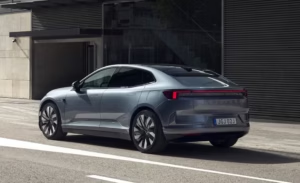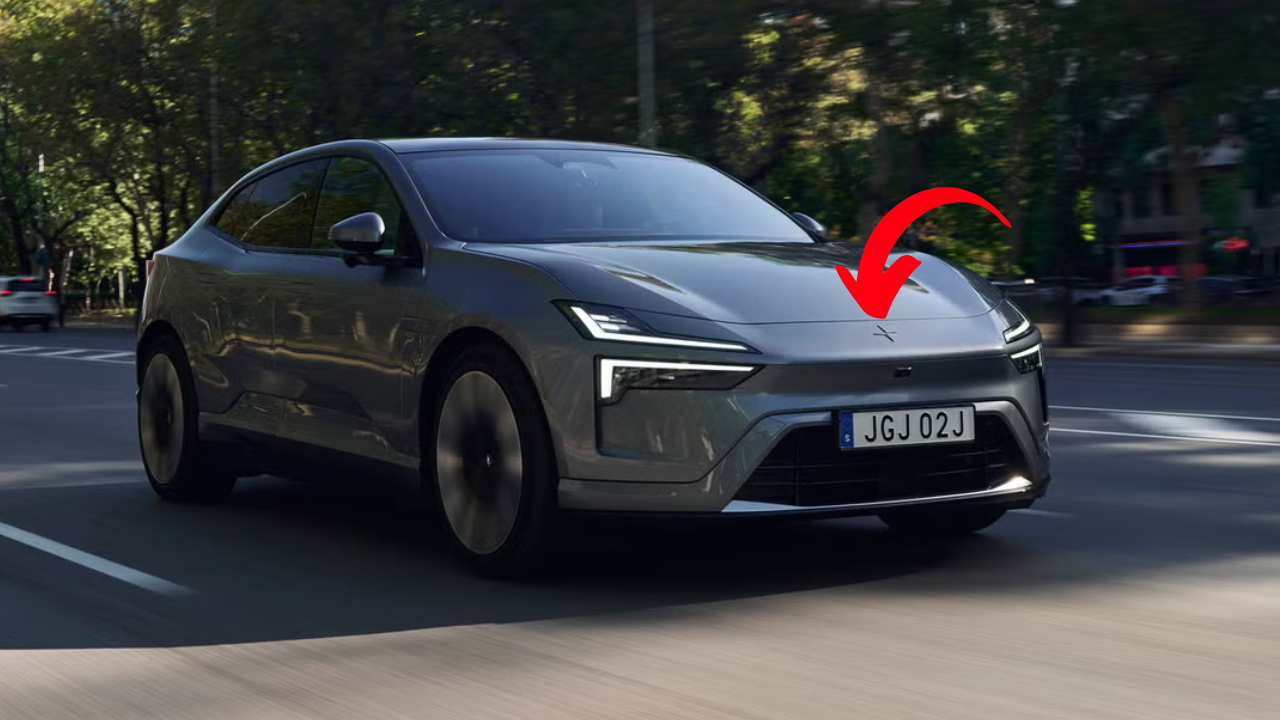The electric vehicle (EV) market in the United States is more competitive than ever, with automakers vying to deliver the perfect blend of performance, range, technology, and value. Among the contenders for 2026 is the Polestar 4, a sleek, Swedish-designed electric SUV coupé that starts at $56,400 (including a $1,400 destination fee). With its futuristic design, innovative features, and a starting price that undercuts many premium rivals, the Polestar 4 is generating buzz as a potential game-changer. But does it truly stand out as the best EV for the price? In this 1,500-word review, we’ll dive into the Polestar 4’s strengths, quirks, and how it stacks up against competitors to determine if it’s the top choice for American buyers in 2026.
Overview of the 2026 Polestar 4
The Polestar 4 is a mid-sized electric SUV coupé that blends the aerodynamics of a coupé with the practicality of an SUV. Built in Busan, South Korea, by Renault for the North American market, it’s a product of global collaboration under the umbrella of Geely, Polestar’s Chinese parent company, with Swedish design roots. Positioned between the Polestar 2 sedan and the Polestar 3 SUV, the Polestar 4 is now the brand’s most affordable offering in the U.S. following the discontinuation of the Polestar 2’s base model. Its starting price of $56,400 for the Long Range Single Motor version makes it an attractive option in the luxury EV segment, competing with models like the Tesla Model Y, Audi Q6 e-tron, and BMW iX3.
The Polestar 4 comes in two main variants: the Long Range Single Motor (rear-wheel drive, 272 horsepower, 300-mile EPA range) and the Long Range Dual Motor (all-wheel drive, 544 horsepower, 272-mile EPA range). Both are powered by a 100-kWh lithium-ion battery, offering competitive range and fast-charging capabilities. The vehicle’s standout feature, however, is its lack of a rear window, replaced by a high-definition roof-mounted camera and a digital rearview mirror—a bold design choice that’s both futuristic and controversial.
Design and Styling: A Futuristic Statement
The Polestar 4’s exterior is a head-turner. Its sleek, fastback silhouette, low nose with air curtains, retractable door handles, and flush glazing scream aerodynamic efficiency. The absence of a rear window is the most talked-about feature, with Polestar claiming it enhances rear headroom and improves aero performance. A panoramic glass roof stretches beyond the rear seats, ensuring the cabin feels airy despite the missing rear glass. The signature Polestar headlights and minimalist aesthetic, inspired by the Polestar Precept concept, give it a clean, reserved look that’s distinctly Scandinavian.

For American buyers, this design stands out in a sea of boxy SUVs. It’s sportier than the Tesla Model Y and less conventional than the Audi Q6 e-tron, offering a unique blend of style and functionality. The Polestar 4’s proportions—190.6 inches long, 79.1 inches wide, and 60.4 inches tall—place it between the Tesla Model 3 and Model Y in size, but its long 118.1-inch wheelbase maximizes interior space.
However, the lack of a rear window has sparked debate. While the digital rearview mirror provides a wider field of view than a traditional mirror, some drivers find it disorienting, requiring a moment to refocus their eyes on the screen. This could be a dealbreaker for some, though others report adapting quickly, especially in adverse weather where the camera excels. Test-driving the Polestar 4 is a must to determine if this quirk suits your driving style.
Performance: Power and Poise
The Polestar 4 offers two powertrains tailored to different driving preferences. The Long Range Single Motor delivers 272 horsepower and 253 pound-feet of torque, achieving 0-60 mph in 6.9 seconds—plenty quick for daily driving. The Long Range Dual Motor, with 544 horsepower and 506 pound-feet of torque, is the fastest Polestar production car to date, sprinting to 60 mph in just 3.7 seconds. This performance rivals high-end EVs like the Porsche Macan Electric, though the Polestar 4 is significantly more affordable.
The single-motor version is rear-wheel drive, offering a playful driving experience with precise steering and a low center of gravity that masks its roughly 5,000-pound curb weight. The dual-motor variant, with all-wheel drive, prioritizes grip and stability, making it ideal for spirited driving or inclement weather. However, reviews note that the dual-motor version feels less engaging than competitors like the Macan Electric due to its conservative traction control and lack of a torque-vectoring rear axle. The single-motor model, by contrast, is more fun in corners, though its passive suspension can feel turbulent on rough roads.
For American buyers, the Polestar 4’s ride quality strikes a balance between sporty and comfortable. It handles well at highway speeds, with minimal body roll thanks to its low ride height. However, the suspension can feel firm over bumps, especially in the single-motor version without adaptive dampers. The dual-motor model’s optional adaptive suspension improves body control, making it a better choice for those prioritizing refinement.
Range and Charging: Competitive but Not Class-Leading
Range is a critical factor for EV buyers, and the Polestar 4 delivers solid numbers. The single-motor version achieves an EPA-estimated 300 miles per charge, while the dual-motor version offers 272 miles. These figures are competitive with the Tesla Model Y Long Range (up to 330 miles) and the Audi Q6 e-tron (around 300 miles). The 100-kWh battery supports 200-kW DC fast charging, allowing a 10-80% charge in about 30 minutes, and 11-kW AC charging for home use. Bi-directional charging is standard, enabling the car to feed energy back to the grid or power a home, though compatible home chargers are rare.
For American road-trippers, the Polestar 4’s range is sufficient for most journeys, and its fast-charging capability minimizes downtime. However, Tesla’s Supercharger network remains a significant advantage for Model Y owners, as Polestar relies on third-party networks like Electrify America, which can be less reliable.
Interior and Technology: Scandinavian Serenity
Inside, the Polestar 4 is a masterclass in minimalist luxury. The cabin features sustainable materials like vegan leather, recycled PET, and 3D MicroTech vinyl, aligning with Polestar’s eco-conscious ethos. The 15.4-inch landscape touchscreen, powered by Google’s Android Automotive OS, is intuitive and supports Google Maps, Google Assistant, and Apple CarPlay. A head-up display, part of the $5,500 Plus Pack, enhances driver convenience, while the Harman Kardon sound system delivers crisp audio.
The spacious rear seats, made possible by the long wheelbase and lack of a rear window, offer lounge-like comfort with optional electronic reclining. The boot provides 526 liters of cargo space, expandable to 1,536 liters with the rear seats folded, matching competitors like the Audi Q6 e-tron. A small 15-liter frunk adds minimal storage.
For American families, the Polestar 4’s interior is practical and premium, though the lack of a rear center tether anchor may disappoint those needing to secure multiple child seats. The cabin’s simplicity and quality materials rival luxury brands, but the reliance on touchscreen controls for functions like mirror adjustments may frustrate traditionalists.
Safety and Features: Well-Equipped
The Polestar 4 comes loaded with standard features, including 20-inch wheels, a panoramic glass roof, a 360-degree camera, adaptive cruise control, and Pilot Assist with lane-change functionality. The Plus Pack adds luxury touches like heated rear seats and three-zone climate control, while the Performance Pack (dual-motor only) includes 22-inch wheels, Brembo brakes, and performance tuning. Safety features are robust, with Polestar prioritizing occupant protection, though specific crash test ratings are pending.
Pricing and Value: A Strong Contender
At $56,400, the base Polestar 4 undercuts the Porsche Macan Electric ($80,000+) and is priced similarly to the Tesla Model Y Long Range ($54,990) and Audi Q6 e-tron ($63,000). The dual-motor version starts at $64,300, with fully loaded models reaching $74,300. Compared to the Volvo XC40 Recharge, a corporate cousin, the Polestar 4 offers more power and a sleeker design for a slightly higher price.
The Polestar 4’s value proposition is strong, offering premium design, performance, and technology at a competitive price. However, its range is slightly shorter than the Model Y’s, and Tesla’s charging network is a significant advantage. The Polestar’s unique styling and interior quality may sway buyers seeking something distinctive.
Competition: How It Stacks Up
-
Tesla Model Y Long Range ($54,990): Offers a longer 330-mile range and access to Tesla’s Supercharger network but lacks the Polestar’s premium interior and unique design. It’s a practical choice for range-conscious buyers.
-
Audi Q6 e-tron ($63,000): Matches the Polestar’s range and offers a more traditional SUV design but is pricier and less distinctive.
-
BMW iX3 ($60,000): Comparable in price and range but less sporty and lacks the Polestar’s futuristic vibe.
-
Porsche Macan Electric ($80,000+): Superior in performance and handling but significantly more expensive, making the Polestar a better value for most buyers.
Verdict: Is It the Best EV for $56,400?
The 2026 Polestar 4 is a compelling choice for American buyers seeking a stylish, high-tech EV with strong performance and competitive range. Its sleek design, premium interior, and innovative features like the digital rearview mirror make it stand out in a crowded market. The single-motor version offers excellent value at $56,400, with a 300-mile range and a fun-to-drive nature, while the dual-motor version delivers exhilarating performance for thrill-seekers.
However, it’s not without flaws. The lack of a rear window may deter some drivers, and the suspension can feel firm on rough roads. Tesla’s Model Y remains a strong rival with a longer range and better charging infrastructure, while the Audi Q6 e-tron offers a more conventional alternative. For buyers prioritizing style, sustainability, and a unique driving experience, the Polestar 4 is a top contender, but it falls just short of being the definitive “best” EV due to its quirks and charging network limitations.
Ultimately, the Polestar 4 is ideal for those who want a distinctive, eco-conscious EV that blends luxury and performance without breaking the bank. Test-drive it to see if its futuristic charm wins you over—it just might be the EV you’ve been waiting for.
Also Read –
